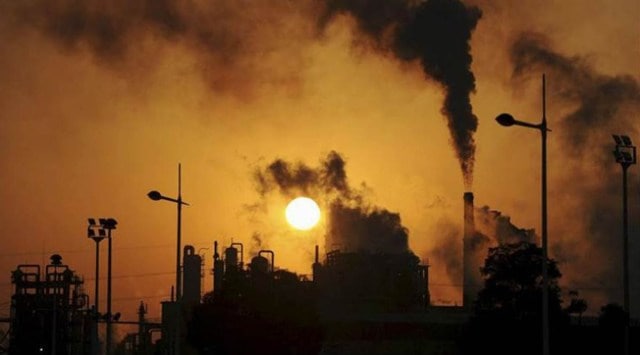India’s greenhouse emissions rate has dropped by a faster-than-expected 33% in 14 years, driven by the rise of renewable energy generation and increased forest cover, according to officials familiar with the latest assessment submitted to the United Nations.
The report indicates that India is making significant progress towards meeting its commitment to the United Nations Convention on Climate Change (UNFCCC) by reducing emissions intensity by 45% from the 2005 level by 2030.
Officials involved in the preparation of the Third National Communication (TNC) report revealed that India’s emissions intensity, which measures the total amount of greenhouse gas emissions emitted for every unit increase of gross domestic product (GDP), decreased by 33% from 2005 to 2019.
Many countries are currently working on their TNC reports to update the UNFCCC on their efforts to reduce emissions.
India’s average rate of emissions reduction increased to 3% annually between 2016-2019, up from around 1.5% in the period 2014-2016. This acceleration is largely attributed to the government’s focus on renewable energy, despite the continued dominance of fossil fuels in the energy mix.
An unnamed official mentioned to Reuters that the continuous reduction in India’s emission intensity demonstrates the country’s ability to separate economic growth from greenhouse gas emissions.
The improvements in reducing emissions intensity should help India resist pressure from developed nations to phase out coal, according to another official. This official credited the sharp decline in emissions intensity to the increase in forest cover and initiatives promoting non-fossil fuel generation while addressing emissions in various sectors.
As of 2019, India’s forests and trees covered 24.56% or 80.73 million hectares of the country.
India has also been promoting green hydrogen production using renewable energy sources.
The report is awaiting approval from the federal cabinet, according to a third official. The Ministry of Environment in India did not respond to queries from Reuters on Monday.
Data from the Central Electricity Authority reveals that non-fossil fuel-based power sources, including hydro, nuclear, and renewable energy, accounted for 25.3% of India’s total power generation in the fiscal year ending in March, up from 24.6% three years earlier.
Thermal power stations still provide 73% of the electricity consumed, down from about 75% in 2019.
The G20 major economies were unsuccessful in reaching an agreement last month on phasing out fossil fuels and setting concrete emission reduction targets.
Developing countries like India are pushing back on higher emission reduction targets, citing the depletion of resources due to the unrestricted use of fossil fuels by industrialized nations.


